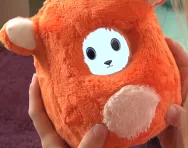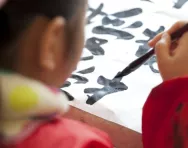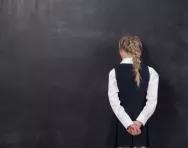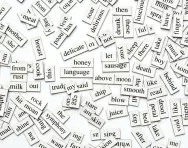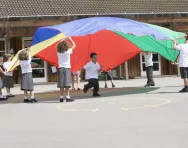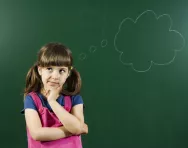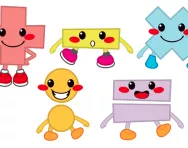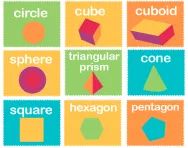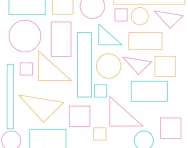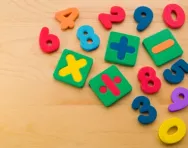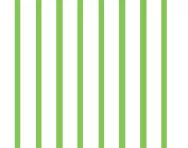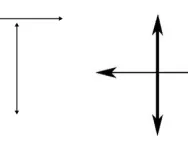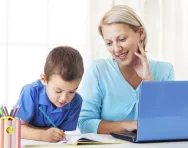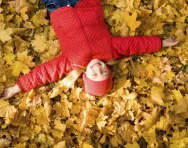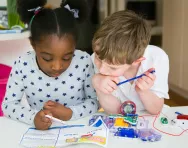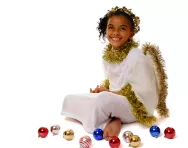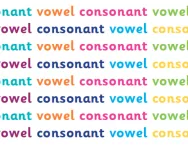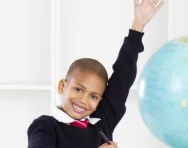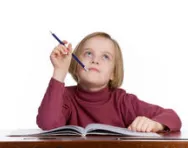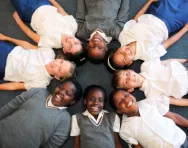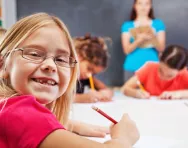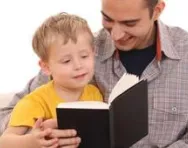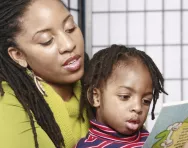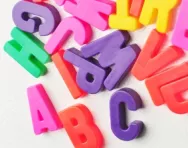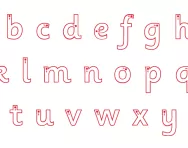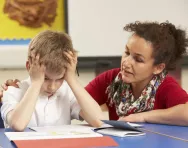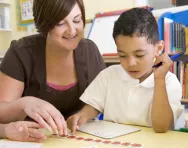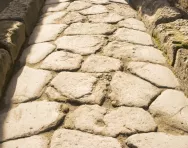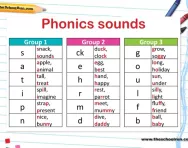100 of the best educational toys: EYFS
Learning toys that are packed with play value, too, our 100 best educational toy picks will help your child identify numbers and letters, learn their high frequency words, understand rhyming and even get to grips with primary-school programming and physics. Get great gift ideas with our recommendations for nursery and Reception children!
100 of the best educational toys: stocking fillers
Don't forget the stockings! These little toys and games are the perfect size to slip in, yet still offer plenty of educational opportunity. Encourage observation, curiosity, dexterity and creativity with these brilliant gifts, whatever age your child is.
Primary-school Chinese: the lowdown
Learning a foreign language has been compulsory for Key Stage 2 children since 2014, and Mandarin is an option in forward-thinking schools. Lucy Dimbylow explains what you need to know about Chinese in primary schools.
School exclusions: everything primary-school parents need to know
Parents faced with their child being excluded from school are often very upset and confused. Moira Holden looks at the regulations that surround the exclusion process.
13 ways to make grammar fun for children
With all Year 6 children required to take a spelling, punctuation and grammar test and more emphasis on the technical side of English in the primary curriculum, we asked the experts for their top tips and practical activities to help your child engage with – and enjoy – grammar.
6 primary-school health concerns parents need to look out for
The days of colic and cradle cap may be long gone, but your primary school child is now susceptible to a different range of health issues. From tummy bugs and nits to emotional health concerns, Lucy Dimbylow looks at what you need to know to keep them safe and well.
7 life skills all primary-school children need
Not everything your child needs to get on in life can be learned in the classroom. From typing and DIY skills to cooking and lifesaving, here are seven vital skills that will stand them in good stead in the primary-school years and beyond. By Lucy Dimbylow
Philosophy in primary school: how thinking skills will benefit your child
Pondering life’s big questions could have some surprising benefits for your child. So how is philosophy taught in primary schools, and how can you encourage children to think deeper at home?
What are the four operations?
We explain what the four operations are and how children learn about addition, subtraction, multiplication and division over KS1 and KS2, working towards solving problems involving all four operations.
What are regular and irregular shapes?
We explain what regular and irregular shapes are and suggest mnemonics to help children remember how many sides different shapes have. We also have examples of the types of questions primary-school children might be asked about shapes.
What are the properties of 2D and 3D shapes?
We explain what the properties of 2D and 3D shapes are, what faces, edges and vertices are and how children will describe 2D and 3D shapes in KS1 and KS2.
What are the names of 2D and 3D shapes?
We explain what the different 2D and 3D shapes are, when primary-school children are taught to name them and sort shapes according to their properties and when they learn to identify and draw their own nets of 3D shapes.
What are odd and even numbers?
We explain what odd and even numbers are and how primary-school children are taught about this concept in KS1 and then have to apply this learning in KS2.
What are degrees?
We explain what degrees are and how children are taught to use protractors to measure angles, as well as reviewing the different knowledge children acquire about angles throughout KS1 and KS2.
What are right, acute, obtuse and reflex angles?
We explain what right, acute, obtuse and reflex angles are and how children are taught about different angles through KS1 and KS2.
What is horizontal?
We explain how primary-school children are taught to recognise horizontal lines in shapes.
What is vertical?
We explain how primary-school children are taught to recognise vertical lines in shapes, and what you can to to support your child's understanding at home.
What is parallel?
We explain what parallel means and how children are taught about shapes throughout KS1 and KS2.
What is perpendicular?
We explain what perpendicular means and how children are taught angles throughout KS1 and KS2.
What is diagonal?
We explain what diagonal means in geometry and why it is important that children understand this term when learning about 2D shapes in primary school.
The beginner's guide to primary-school homework
How much homework should your child get in primary school, how often is it set, and what should you do if he’s getting too much – or none at all? We asked teachers for their insights on how to manage the home-school learning most effectively.
7 learning activities for autumn weather
Do you remember diving into a pile of crisp, golden autumn leaves? Collecting conkers? Walking through first-frost grass and feeling it crackle under your feet? Autumn and early winter are really inspirational seasons for outdoor activities, so wrap up warm and march the whole family out of the door. They won't want to come back in!
How to create a budding engineer
Engineering underpins almost every aspect of modern life. So what will your child learn about engineering and technology at school, and how can you encourage their enthusiasm? Lucy Dimbylow finds out.
Brilliant Nativity costumes to buy
Pressed for time on getting an outfit together for your child’s Nativity play? We’ve found a range of costumes to dress your little Mary, Joseph, star or shepherd in that won’t break the bank!
Best phonics learning tools
Want to practise phonics at home? We’ve picked some of the best games, apps, tools and books to help you reinforce what your child is learning at home – the fun way!
What are vowels and consonants?
We explain what vowels and consonants are and how primary-school children are taught to identify CVC, CCVC and CVCC words, vowel digraphs and consonant digraphs.
What is an explanation text?
An explanation text is a specific type of writing and includes some identifiable features. Find out how your child's teacher will teach explanation texts and what your child needs to include in their own explanation texts.
What is a non-chronological report?
A non-chronological report is a piece of text that isn't written in time order. Find out how your child is taught to read and write non-chronological reports in primary school.
What is brainstorming?
Children learn how to brainstorm in school to generate ideas and solve problems. Find out how teachers encourage children to develop this skill and how it can help improve your child's written work.
What is encoding?
Find out how your child will learn to encode – hear a sound and write it down – and what you can do at home to support learning.
What is decoding?
From the first years of school your child will learn to decode written words and say them aloud. Find out how teachers teach decoding and how you can support learning at home.
What is blending?
As they learn to read, children are taught individual sounds and then how to link them together to form words. By the end of Reception your child will be able to blend sounds together; find out how your child will be taught blending in school and how you can support learning at home.
What is a letter sound?
By the end of EYFS your child should know the sound each letter makes. Find out how your child will be taught letter sounds in school and how you can support learning at home.
What is a grapheme?
Your child will be taught about graphemes as part of their phonics learning journey. We explain what graphemes are and how you can help your child understand the concept at home.
How to work with your child’s SENCO
Having a healthy working relationship with your child’s SENCO can help ensure they get the support they need. Here’s how to ensure you make a good team. By Lucy Dimbylow
How a SENCO could help your child
If your child has a special educational need, the school’s SENCO is likely to play a big part in his day-to-day life and learning. Lucy Dimbylow highlights nine ways in which she can help make your child’s school journey easier.
4 ways to travel back to Roman London
Travel back in time 2,000 years and enter Londinium, a Roman city which stood where the capital does today. Bring the Roman empire to life without leaving the UK (and for free!) with a walk round Roman London, from Londinium's amphitheatre to the remains of the Roman Wall. Francesca Fenn of Step Outside Guides offers a few ideas for a Roman discovery day for KS1 and KS2 children.
What is phonics?
Sort your phonemes from your graphemes, decoding from encoding and digraphs from trigraphs with our parents' guide to phonics teaching. Our step-by-step explanation takes you through the different stages of phonics learning, what your child will be expected to learn and the vocabulary you need to know.
What is sentence level work?
Sentence level work is everything your child will be taught about grammar, text content and punctuation in the primary-school classroom. We offer some examples of activities to help them practise and improve their writing at home.
7 common school life problems solved
Every parent wants their child to be happy at school, but what if there’s a problem? Here’s our step-by-step guide to tackling and resolving some of the common issues that might crop up in primary school.
